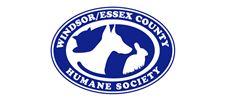Session J: Contested Meat: From Working Equines to Pasture Pets to the Dinner Plate - An Ethnozoological Exploration of the Complex Nature of Horse Slaughter in Canada
Sub-theme
Research and Theory
Keywords
Horse, identity, slaughter, ethnozoological
Start Date
13-10-2018 9:00 AM
End Date
13-10-2018 10:15 AM
Abstract
Using an ethnozoological approach, I explore the social identity of the horse as a construct in Canadian society. The horse is the only animal in Canada that is at once a performance, work, companion, and food animal. Canada slaughters approximately 45,000 horses per year and exports another 5,000 abroad for slaughter. Horse owners, veterinarians, trainers, livestock handlers, horse dealers, retailers who sell horse related products, food critics, horse meat retailers as well as members of the public who witness horse shows, fairs, and displays all contribute to how the social identity of the horse is constructed. In discussing the social identity of the horse at slaughter, I will explore such issues as the horse-human bond, the role of the horse in society, our ethical obligations toward horses who have served us as companions/work animals, the issues of revenue and food to be derived from slaughtering horses. . This paper uses three methods of data collection: textual analysis, participant observation drawn from my work in the horse industry, and qualitative interviews.
In comparing and contrasting the social identity of the horse in EuroCanadian society with that of animals within indigenous communities I consider the role of taboos, rituals, and cosmology within indigenous communities in terms of the human-animal relationship to arrive at an understanding of contemporary EuroCanadian culture with respect to horse slaughter and consumption. Mongolian horse herders place the horse within a spiritual cosmological framework upheld by rituals and taboos such that the complex social role of the horse as a performance, companion, and meat animal is not problematic. In comparison, within the EuroCanadian context, a contributing factor to the horse being such a contested animal in terms of slaughter is the hegemonic view that animals do not occupy a place in a spiritual cosmology within the Judeo-Christian and secular traditions that compose the main perspective of Canadian society
By deconstructing socially accepted practices within Canadian society, I identify culturally accepted patterns of behaviour that, while not rituals, provide institutionalized means of defining a horse as both a companion/performance/work horse and a food source in such a way that society is divided between those who oppose and those who would promote horse slaughter. These patterns provide us with insight into contemporary ethnozoological study of the social personhood of the horse in contemporary EuroCanadian society
Session J: Contested Meat: From Working Equines to Pasture Pets to the Dinner Plate - An Ethnozoological Exploration of the Complex Nature of Horse Slaughter in Canada
Using an ethnozoological approach, I explore the social identity of the horse as a construct in Canadian society. The horse is the only animal in Canada that is at once a performance, work, companion, and food animal. Canada slaughters approximately 45,000 horses per year and exports another 5,000 abroad for slaughter. Horse owners, veterinarians, trainers, livestock handlers, horse dealers, retailers who sell horse related products, food critics, horse meat retailers as well as members of the public who witness horse shows, fairs, and displays all contribute to how the social identity of the horse is constructed. In discussing the social identity of the horse at slaughter, I will explore such issues as the horse-human bond, the role of the horse in society, our ethical obligations toward horses who have served us as companions/work animals, the issues of revenue and food to be derived from slaughtering horses. . This paper uses three methods of data collection: textual analysis, participant observation drawn from my work in the horse industry, and qualitative interviews.
In comparing and contrasting the social identity of the horse in EuroCanadian society with that of animals within indigenous communities I consider the role of taboos, rituals, and cosmology within indigenous communities in terms of the human-animal relationship to arrive at an understanding of contemporary EuroCanadian culture with respect to horse slaughter and consumption. Mongolian horse herders place the horse within a spiritual cosmological framework upheld by rituals and taboos such that the complex social role of the horse as a performance, companion, and meat animal is not problematic. In comparison, within the EuroCanadian context, a contributing factor to the horse being such a contested animal in terms of slaughter is the hegemonic view that animals do not occupy a place in a spiritual cosmology within the Judeo-Christian and secular traditions that compose the main perspective of Canadian society
By deconstructing socially accepted practices within Canadian society, I identify culturally accepted patterns of behaviour that, while not rituals, provide institutionalized means of defining a horse as both a companion/performance/work horse and a food source in such a way that society is divided between those who oppose and those who would promote horse slaughter. These patterns provide us with insight into contemporary ethnozoological study of the social personhood of the horse in contemporary EuroCanadian society





